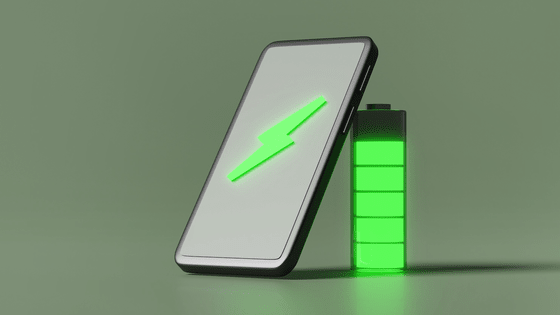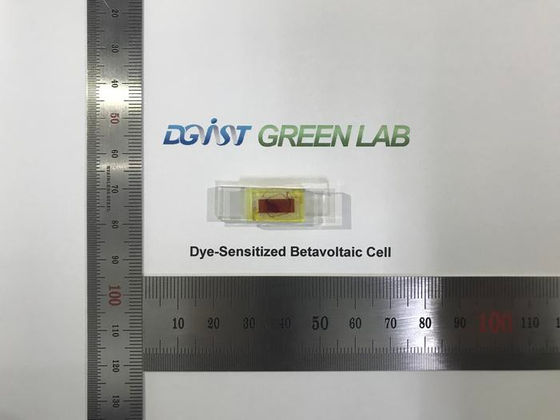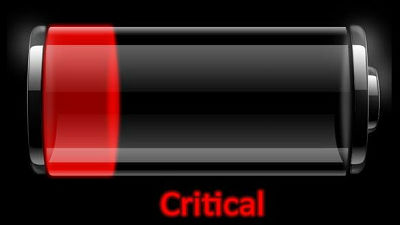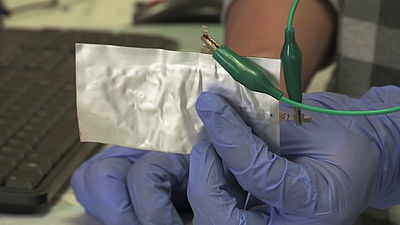Introducing the 'Betavoltaic Battery' that can be used for a lifetime without needing to be charged

Lithium-ion batteries, which are used in many products around us such as smartphones, mobile batteries, and EVs, only last for a few hours to a few days, and their performance deteriorates with each charge. Korean researchers have announced a battery that uses small and safe nuclear energy to last for decades, and in theory, for thousands of years, without recharging.
Next generation battery: Highly efficient and stable C14 dye-sensitized betavoltaic cell - American Chemical Society
A safe nuclear battery that could last a life | EurekAlert!
https://www.eurekalert.org/news-releases/1076979
The spread of drones and remote sensing devices is driving demand for longer-lasting batteries, but according to Professor In Su-il of the Daegu Gyeongbuk Institute of Science and Technology, there isn't much room left for better lithium-ion batteries to be the solution. 'The performance of lithium-ion batteries is almost saturated,' In said.
Unlike lithium, which requires huge amounts of energy to extract and is environmentally hazardous , the next generation of nuclear batteries that Yin plans to present at ACS Spring 2025, a spring meeting of the American Chemical Society held March 23-27, 2025, will use radioactive carbon, a by-product of nuclear power generation, making them cheap, readily available and easily recyclable.
Below is a prototype 'betavoltaic battery' made by In's research team using carbon-14 , a radioactive isotope of carbon.

by Su-Il In
Some people have a disturbing image of nuclear batteries, but since carbon-14 only emits beta rays that can be shielded with a thin aluminum plate, the betavoltaic battery, which converts beta rays into electricity, is expected to be a safe nuclear battery. In addition, since the half-life of carbon-14 is about 6,000 years, a battery using radioactive carbon could theoretically be used for several thousand years.
To design their new betavoltaic cell, the team took titanium dioxide electrodes, a material commonly used in solar cells, and sensitized them with a dye called ruthenium, treating it with citric acid to strengthen the bond between the titanium dioxide and the dye.
Up to this point, the technology is similar to conventional dye-sensitized betavoltaic cells (DSBCs), but Yin et al. have adopted a 'dual-site' approach in which radioactive carbon, which has previously only been used on
When the research team demonstrated the prototype d-DSBC, they confirmed that the electrons emitted as beta rays from the radioactive carbon at both electrodes stimulated the dye at the anode to generate an avalanche of electrons , which were then converted into electrical energy by the titanium dioxide layer. In addition, unlike the conventional design in which radioactive carbon was only present at one electrode, the newly designed d-DSBC, which used radioactive carbon at both electrodes, increased the energy conversion efficiency from 0.48% to 2.86%.

Because betavoltaic batteries have a low output, they cannot be used to power EVs that can continue to run without recharging. However, they could be used to power satellites or as pacemakers that can last a lifetime without the need for surgical replacement.
'Although perceptions of nuclear energy are changing as climate change concerns grow, it is still thought of as something that comes from large power plants in remote locations. Our betavoltaic battery makes it possible to put safe nuclear energy into a device the size of a finger,' Yin said.
Related Posts:







